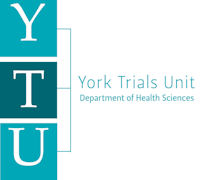PROximal Fracture of the Humerus: Evaluation by Randomisation – The ProFHER Trial
The ProFHER Trial found no important differences in shoulder function between surgery compared to non-surgical treatment for patients who fractured the top of their humerus. Surgery was more expensive than arm support with a sling.
Why did we do this research?
Fracture of the proximal humerus (the top part of the upper arm bone) is common, particularly in older adults. There are two ways to treat these fractures: supporting the injured arm in a sling or surgery to put the fracture fragments back in place and fixing them with plates, screws, or an artificial joint. There was a need to clarify whether surgical or non-surgical treatment is best for these types of fractures.
What did we do?
We conducted a randomised controlled trial, with 250 patients. Half of the patients received surgery and half received support in a sling.
All these patients were followed up at 6, 12, and 24 months after randomisation to find out about their shoulder function, quality of life, and general health.
Who was involved?
We worked with 35 NHS hospitals in the UK who could provide both surgical and non-surgical care for these patients.
What did we find?
We found that there were no important differences in shoulder function, general health, complications, or treatment for complications between patients in the surgery group and those in the non-surgery group. However, we found that surgery costs more than supporting the injured arm in a sling.
What difference did we make?
A subsequent survey of 265 orthopaedic surgeons who treat these fractures found that around half of them had changed practice due to the trial results and around one-third were already using a sling so did not need to change.
What happens next?
Two questions remained once the ProFHER trial was finished:
- How should we treat the complex fractures where the proximal humerus has broken in to 3 or more parts?
- Are newer artificial joints, such as reverse shoulder arthroplasty, effective for treating these fractures?
Both questions are being answered by the ProFHER-2 Trial, which is currently ongoing.
Outputs
Publications
- Handoll H, Brealey S, Rangan A, Keding A, Corbacho B, Jefferson L, Chuang LH, Goodchild L, Hewitt C, Torgerson D. The ProFHER (PROximal Fracture of the Humerus: Evaluation by Randomisation) trial - a pragmatic multicentre randomised controlled trial evaluating the clinical effectiveness and cost-effectiveness of surgical compared with non-surgical treatment for proximal fracture of the humerus in adults. Health Technol Assess. 2015 Mar;19(24):1-280. http://doi:10.3310/hta19240
- Handoll, H., Brealey, S., Rangan, A. et al. Protocol for the ProFHER (PROximal Fracture of the Humerus: Evaluation by Randomisation) trial: a pragmatic multi-centre randomised controlled trial of surgical versus non-surgical treatment for proximal fracture of the humerus in adults. BMC Musculoskelet Disord 10, 140 (2009). https://doi.org/10.1186/1471-2474-10-140
- Handoll HH, Keding A, Corbacho B, Brealey SD, Hewitt C, Rangan A. Five-year follow-up results of the PROFHER trial comparing operative and non-operative treatment of adults with a displaced fracture of the proximal humerus. Bone Joint J. 2017;99-B(3):383-392. doi: https://doi.org/10.1302/0301-620X.99B3.BJJ-2016-1028
- Jefferson L, Brealey S, Handoll H, Keding A, Kottam L, Sbizzera I, Rangan A. Impact of the PROFHER trial findings on surgeons' clinical practice: An online questionnaire survey. Bone Joint Res. 2017 Oct;6(10):590-599. https://doi:10.1302/2046-3758.610.BJR-2017-0170
Other outputs
- Clinical Guidelines incorporating PROFHER Results. See section 9.6. Definitive treatment – proximal humerus fractures https://www.ncbi.nlm.nih.gov/books/NBK368139/
Privacy Notice: How we use your research data
Funding
The research was commissioned by NIHR HTA programme (Award ID: 06/404/53) and a grant of £1,325,959.60 awarded. The project was started in April 2008 and completed in July 2016.

